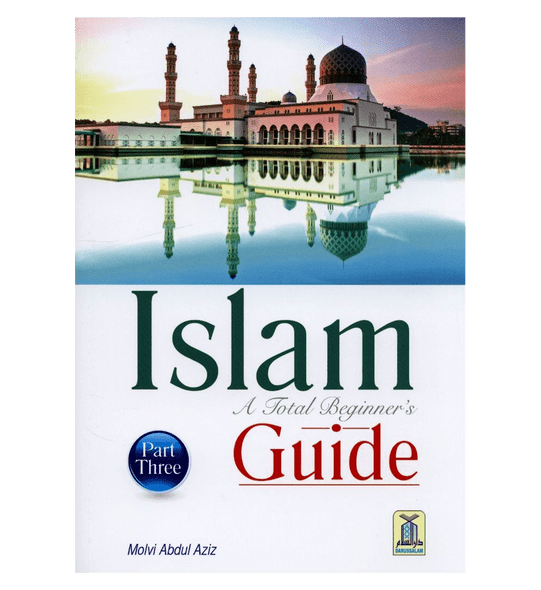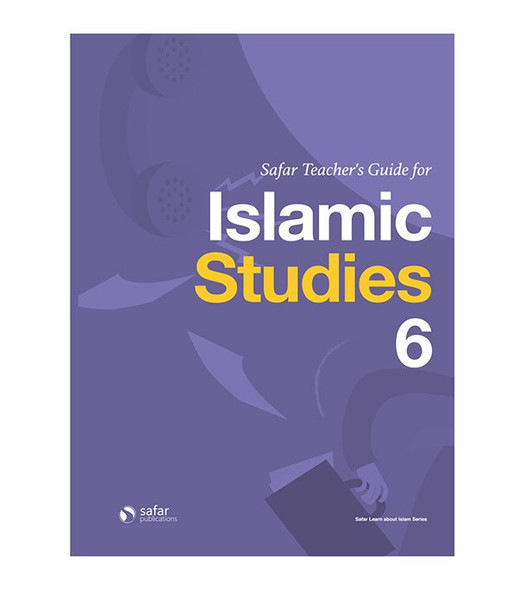Description
This book is the first in the series and is tailored towards children aged 7–9 who are confident readers. It teaches basic concepts such as: Who is Allāh (SWT)?; What is al-Islām?; Who is Prophet Muḥammad (ṢAAS)?; What is the shahādah?; and What is the Qur’ān? It also explores the concepts of cleanliness and how to perform wuḍū’; the adhān and iqāmah; and the movements and words that make up a rak‘ah (unit of prayer). The book culminates with a lesson on how to perform a complete act of ṣalāt.
Lessons are written in clear, simple English and are kept short to maintain interest. Most lessons are followed by a comprehension exercise and homework activities to encourage the pupils to revisit the materials they have been taught. Classroom discussion points are also included to invite the children to explore each chapter in greater depth and to think about how they can apply the lessons in their everyday lives. The passages of Arabic, where included, are furnished with a pronunciation guide to aid memorisation and correct recitation, alongside the English meaning to help foster a good understanding of what is being taught.
This book is the second in the series and is tailored towards children aged 7–9 who are confident readers. It teaches basic concepts such as: What are the Asmā’ul-Lāhil-Ḥusnā?; What is the Āyatul-Kursiyy?; What are the Mu‘awwidhatayn?; and What was the first Hijrah in Islam? It also explores what invalidates aṣ-Ṣalāt, what to expect when attending Friday Prayers, and the differences between offering ṣalāt in congregation and praying alone. A further section explores the subject of aṣ-Ṣawm in detail, not just the annual fast of Ramaḍān, but also supererogatory fasting. The key features of a mosque are highlighted together with the rules governing behaviour when attending the mosque. Other rules of etiquette such as good table manners and greeting fellow Muslims are also addressed.
Lessons are written in clear, simple English and are kept short to maintain interest. Most lessons are followed by a comprehension exercise and homework activities to encourage the pupils to revisit the materials they have been taught. Classroom discussion points are also included to invite the children to explore each chapter in greater depth and to think about how they can apply the lessons in their everyday lives. The passages of Arabic, where included, are furnished with a pronunciation guide to aid memorisation and correct recitation, alongside the English meaning to help foster a good understanding of what is being taught.
Some of the relevant keywords
Islam, Islamic Studies, primary school, madrasas, Guiding Light, pillars of Islam, fasting, sawm, Ramadan, salat, Friday prayer, mosque, mosque features, table manners, greeting, Muslim, the Hijra, Hegira, congregational prayer,
This book is the third in the full series and is tailored towards children aged 7–9 who are confident readers. The central theme is generosity and charitableness, with particular focus on az-Zakāt as one of the five pillars of Islam. It teaches basic concepts such as: In what ways is Allāh (SWT) generous?; What are Zakāt, Ṣadaqah and Ṣadaqah Jāriyah?; What was the Hijrah?; and Who were the Anṣār? It also explains the concept of ducā’ and how to perform them, as well as other ways of expressing thankfulness to Allāh. As part of the continuing exploration of key Islamic beliefs, a chapter on the role of angels is also included. With regard to personal behaviour and development, other themes include: What makes a good neighbour?; How should we respect our parents?; and Why is going to school important?
Lessons are written in clear, simple English and are kept short to maintain interest. Most lessons are followed by a comprehension exercise and homework activities to encourage the pupils to revisit the materials they have been taught. Classroom discussion points are also included to invite the children to explore each chapter in greater depth and to think about how they can apply the lessons in their everyday lives. The passages of Arabic, where included, are furnished with a pronunciation guide to aid memorisation and correct recitation, alongside the English meaning to help foster a good understanding of what is being taught.




















